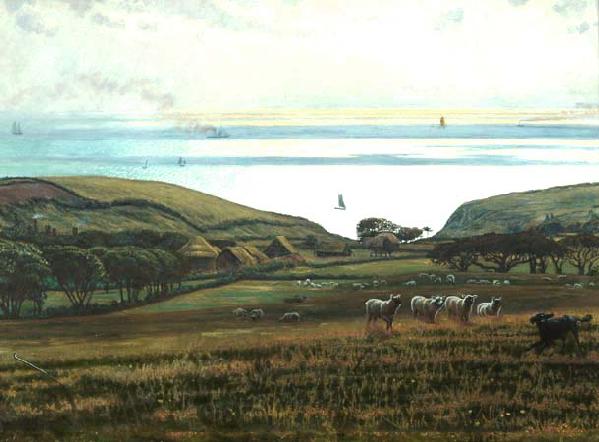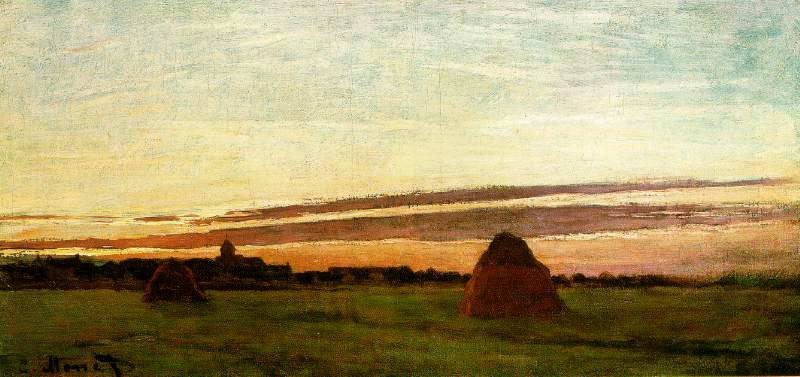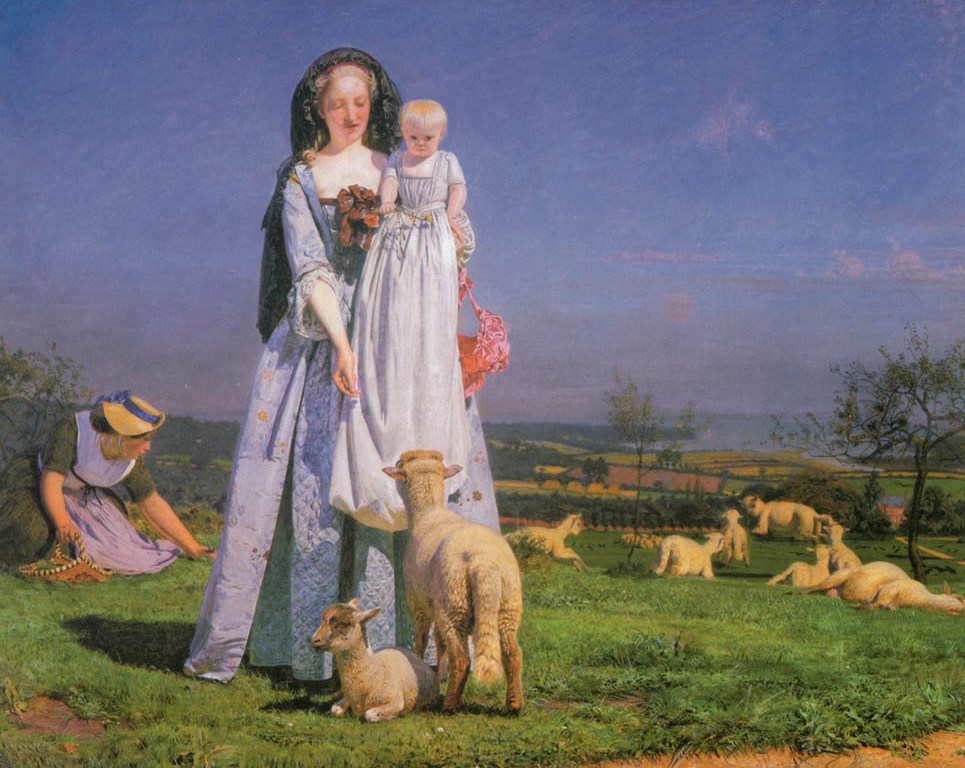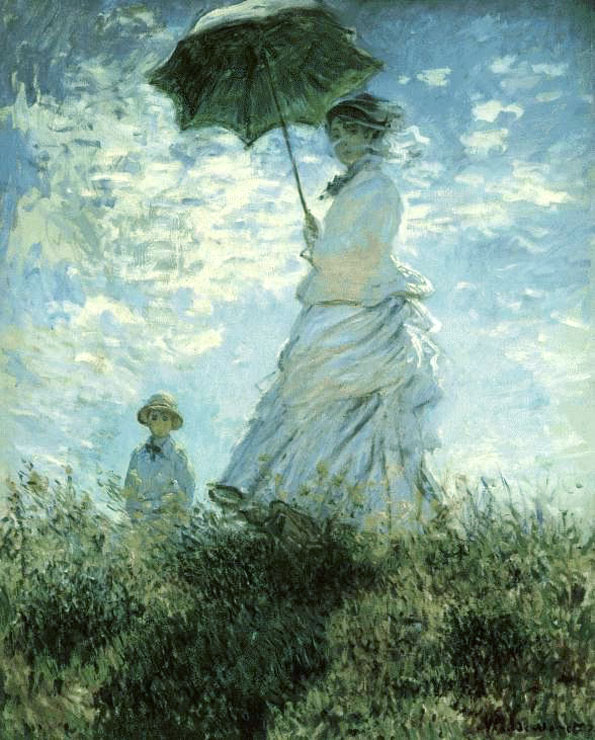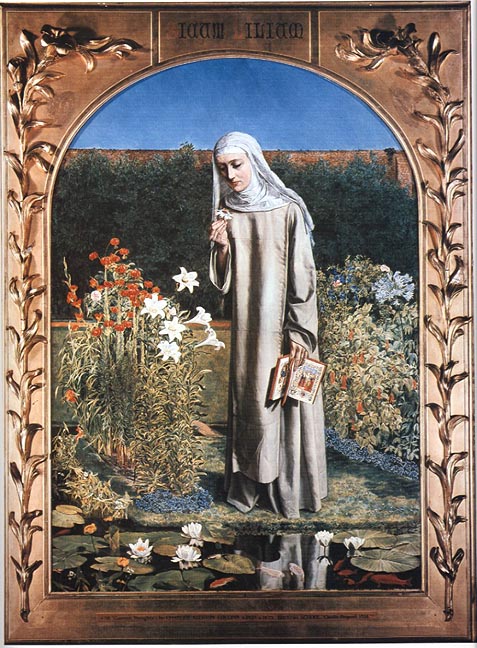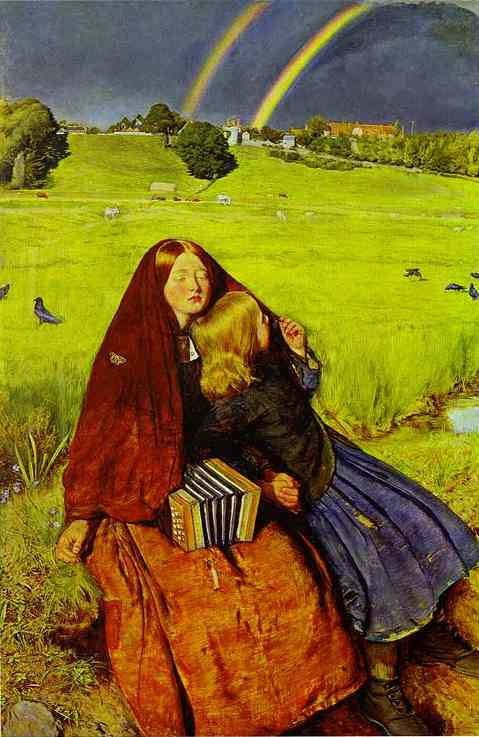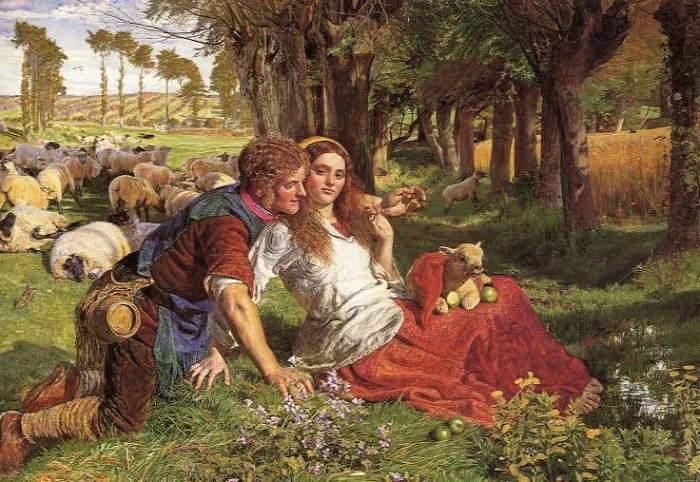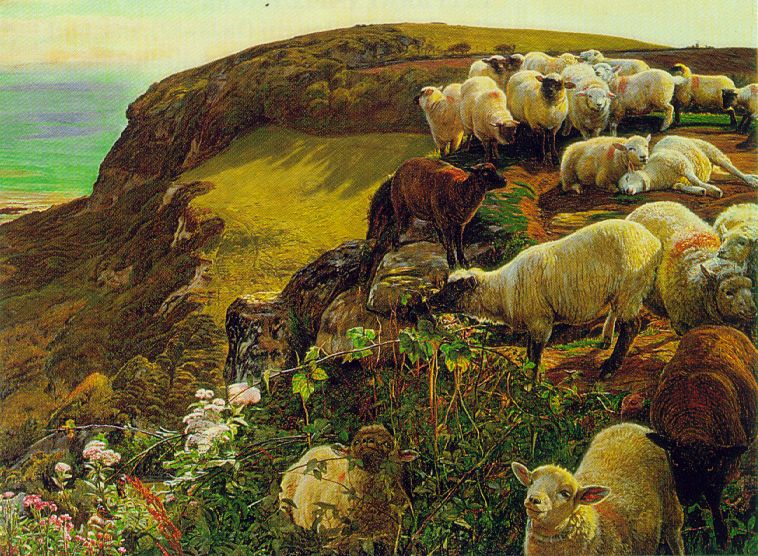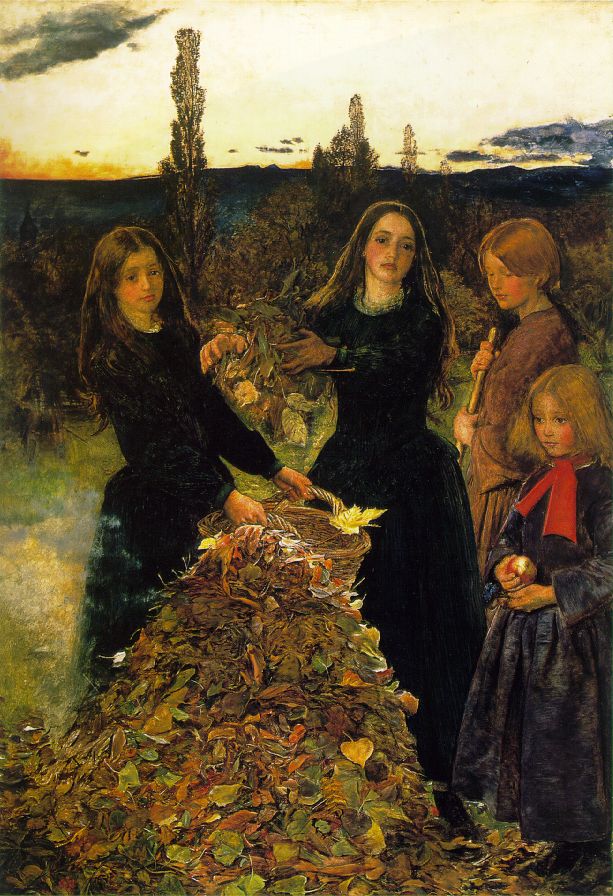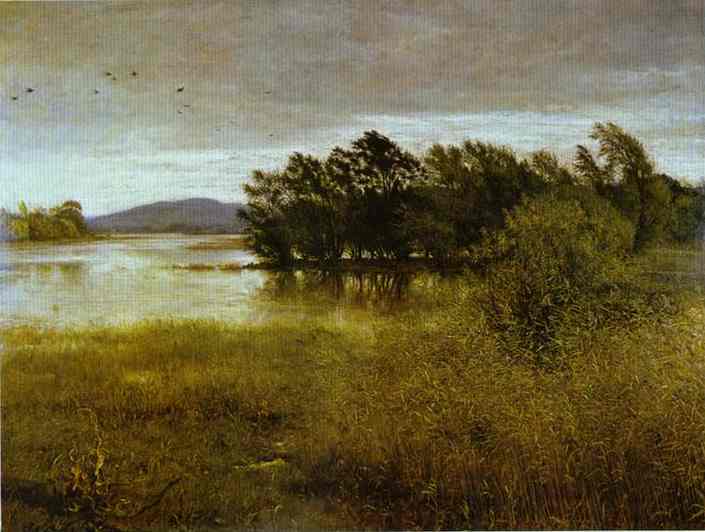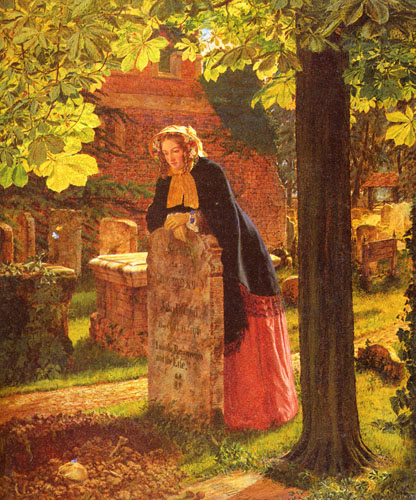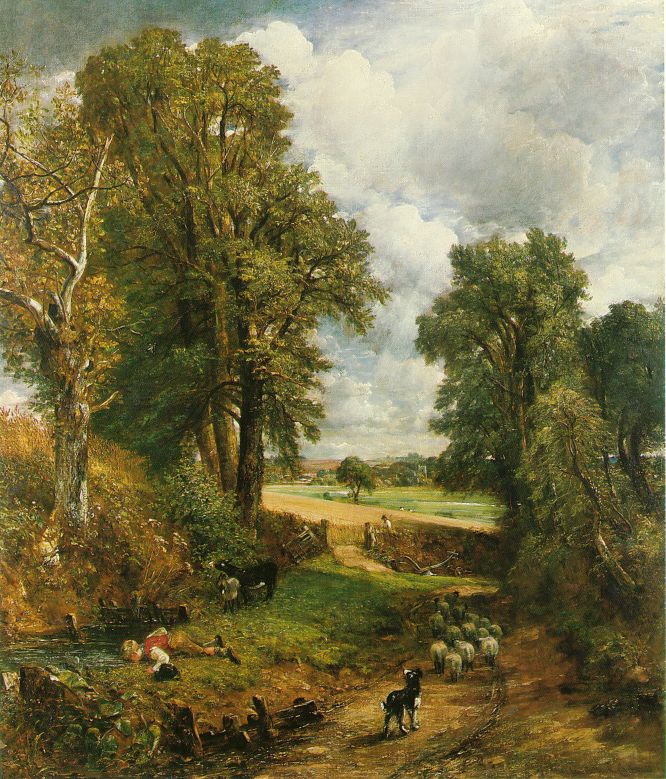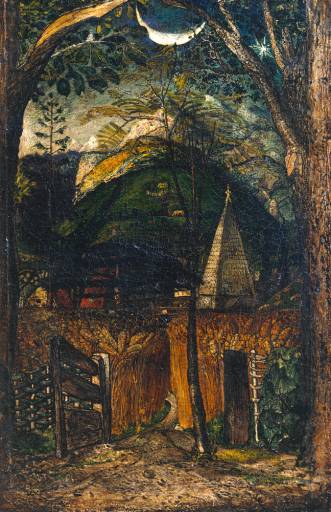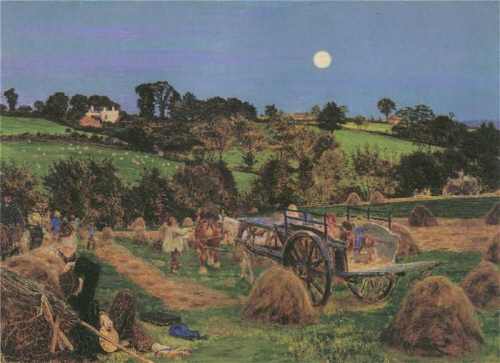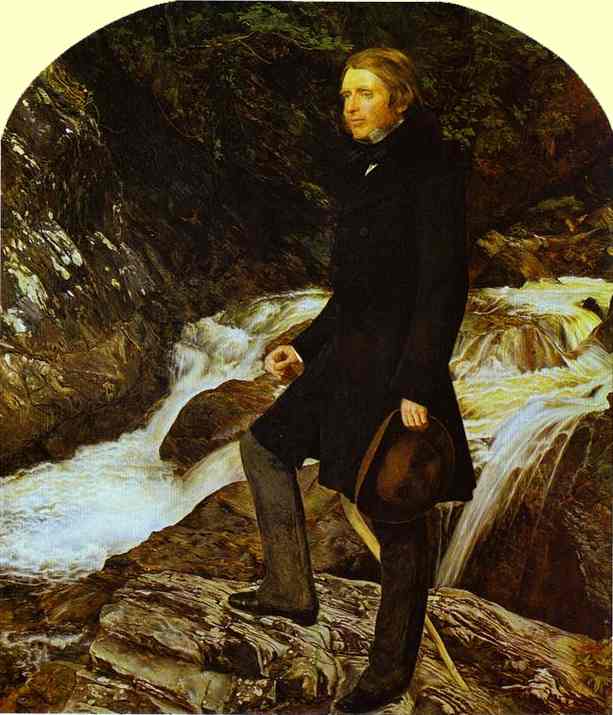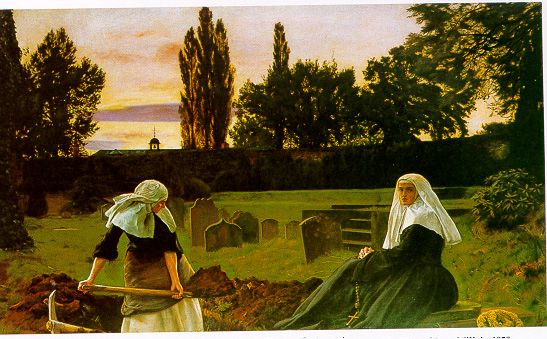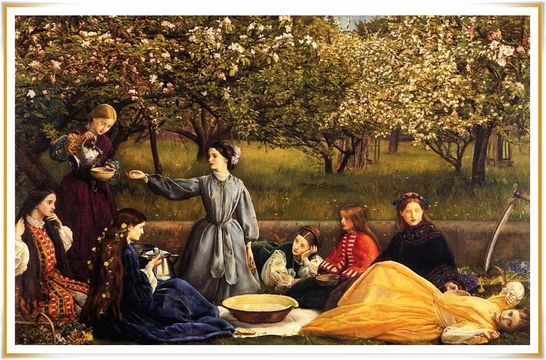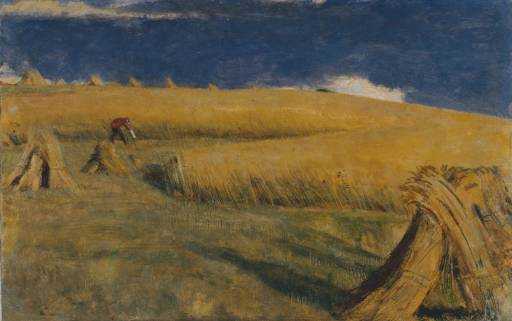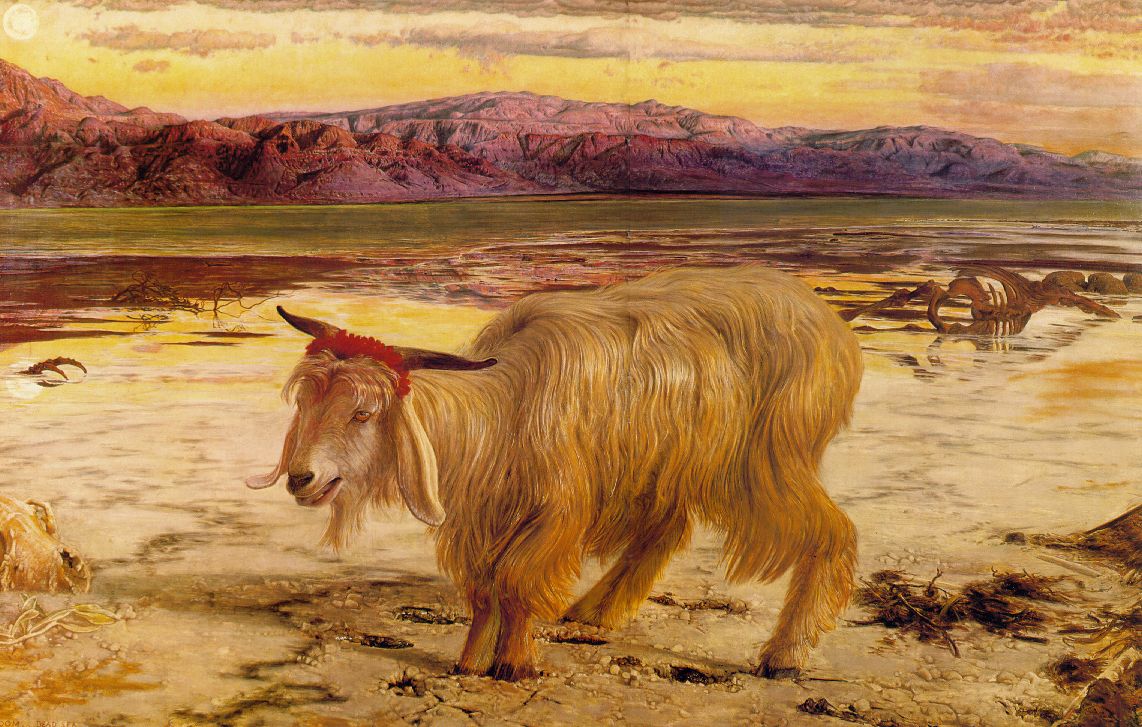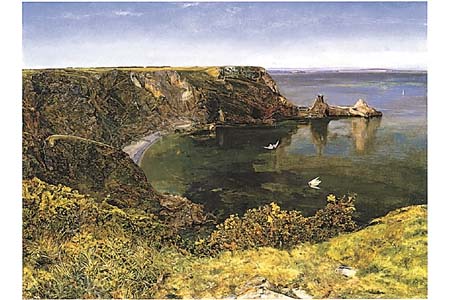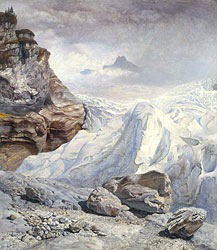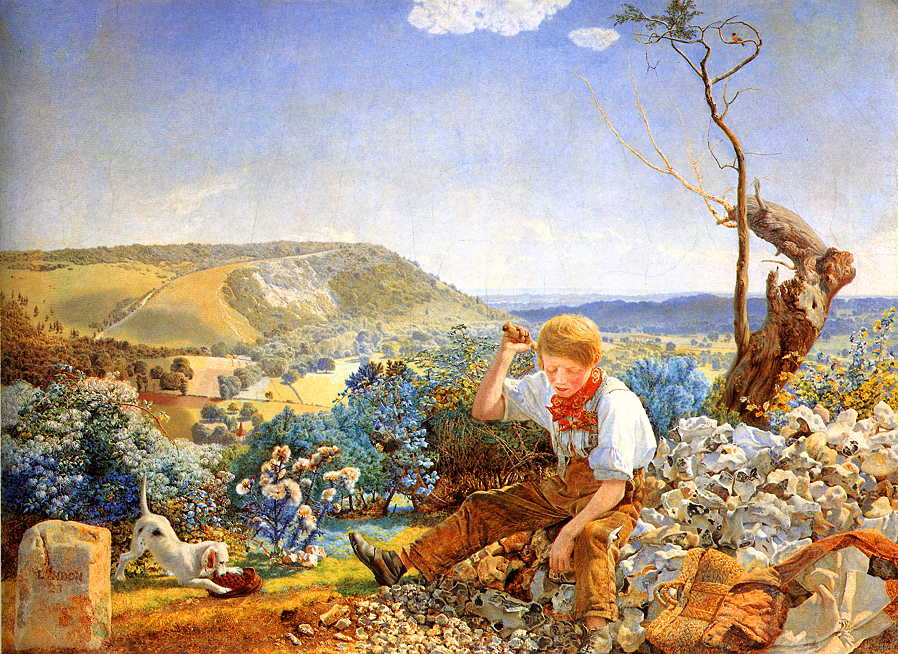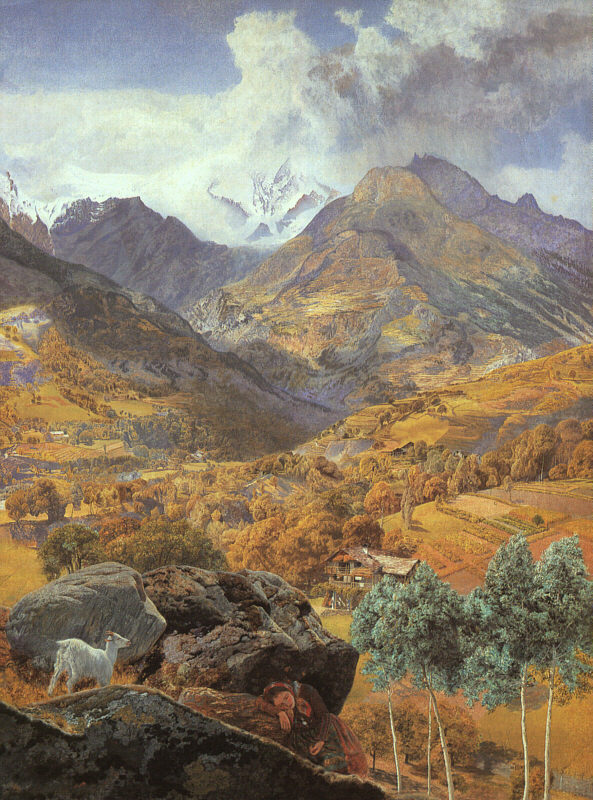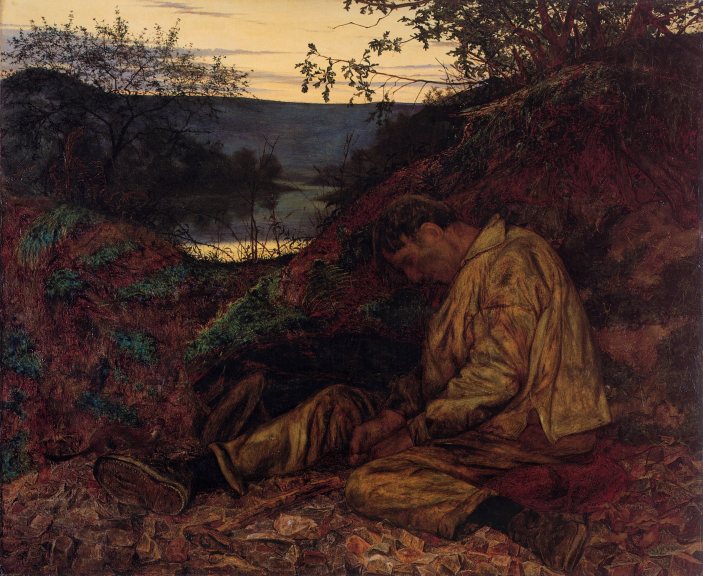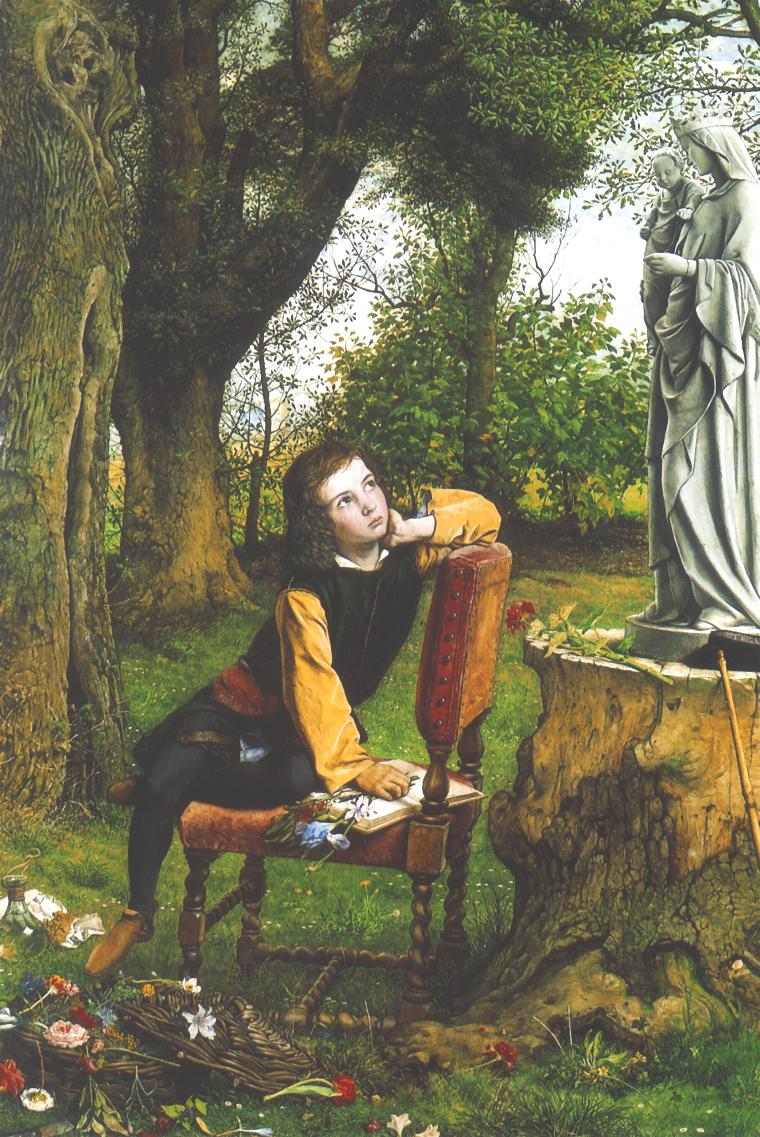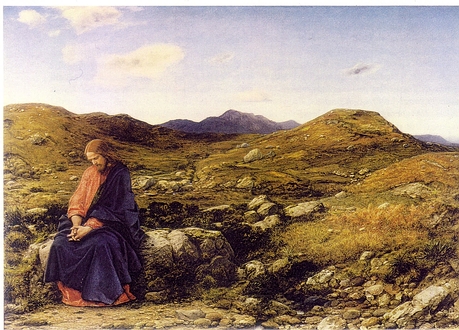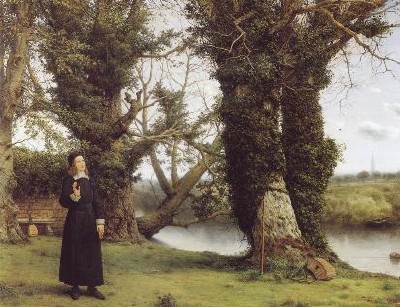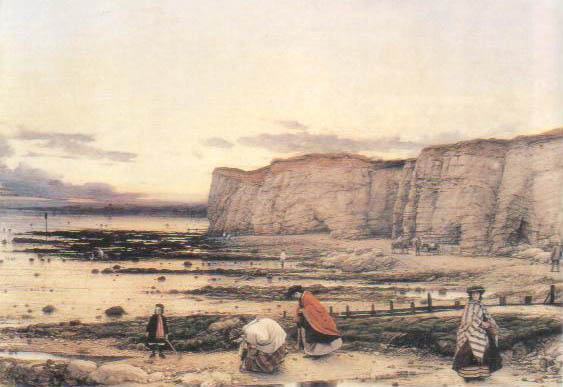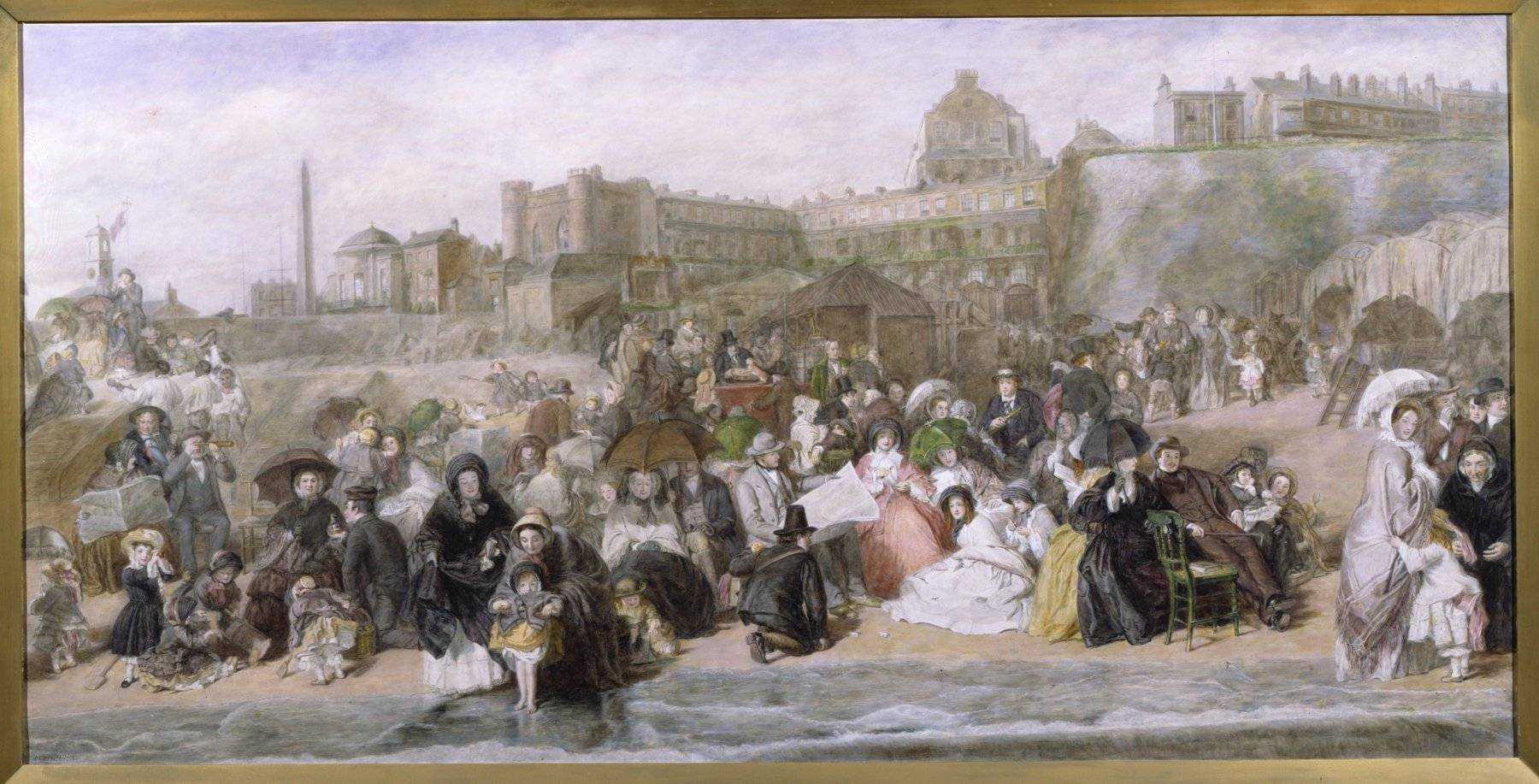We have considered the materiality of vision but it is one thing to see an object and another to transfer it to paint on canvas. It is impossible to represent what we see in a neutral, innocent way.
We can compare the Pre-Raphaelites with the Impressionists, e.g. Monet v. Hunt. Inchbold’s Burning Peat, 1864-6 is very Impressionistic and Inchbold was associated with the PRB. We can compare Brown’s Little Baa Lambs with Monet’s Women with a Parasol (1875).
Hunt Fairlight Downs, Sunlight on the Sea, 1852-8
Monet, Haystacks at Chailly at Sunrise,1865
Ford Maddox-Brown, The Pretty Baa-Lambs, 1848. The model is Emma Hill who he later married. His first wife had died in 1846 in Paris when they were on their way back from a two year stay in Rome.
Monet, Women with Parasol, 1875
The PRB paintings are full of iconography, for example, Collins Convent Thoughts 1851
We need a Victorian flower dictionary to interpret the language of flowers. She is holding a Passion Flower (religious superstitution but in this case perhaps the Passion of Christ) with water lilies (purity of heart) and lilies (youthful innocence). See The Language of Flowers and Art Fund reference which talks about the lily representing the spiritual dimension of woman’s nature. Note the the illuminated book (the Bible?) has fallen to her side as she gases at nature. Nature is better than art as “Nature is a work of art made by God” (Ruskin). Ruskin often referred to this idea that enabled scientific truth (the photographic painting) with spiritual truth simultaneously.
Ruskin and the notion of type (A type in biblical theology is a figure, representation, event, or symbol in the bible which is believed to be a prefigurement designed by God to foreshadow things to come. An antitype is the thing which is foreshadowed. The terms are used particularly to refer to types in the Old Testament that have their antitypes in the New Testament. See http://en.wikipedia.org/wiki/Antitype) :
“Tintoretto’s intensity of imagination is such that there is not the commonest subject to which he will not attach a range of suggestiveness almost limitless; nor a stone, leaf or shadow, nor anything so small, but he will give it meaning and oracular voice.” Ruskin Modern Painters II
Ruskin is interested in the crumbling wall of the old building in Tintoretto’s Annunciation as this he saw as a metaphor for the old being replaced by the new.
Victorians used to go to sermons and discuss preachers in much the same way we discuss films and actors.
Consider and compare the following two paintings:
Millais The Blind Girl 1854-6
Hunt The Hireling Shepherd, 1851-2
The Hireling Shepherd was painted at the time of Tractarian debate (see The Tractarians) about religious procedures. The Shepherd is an antitype for David in the Bible or Jesus. Also John 10.12 “He who is a hireling and not a shepherd, whose own the sheep are not, sees the wolf coming and leaves the sheep and flees; and the wolf snatches them and scatters them.” (See Biblical references to Shepherd for other Biblical references to shepherd).The women is ambigious and has been variously interpreted as the Whore of Babylon or a Virgin (note the halo). The water at her feet could be baptismal but she has a highly sexualised body with circular patterns around her breast and a “vulvic” pocket in her dress and a “come hither” look. We know that in a t least one case Hunt painted his model naked before adding the clothes.
The Victorian period was a period of doubt about religion not, as is generally thought, a period of religious certainty. Artists were often trying to work out religious problems they were being discussed in society.
In Our English Coasts we see a misguided flock and an exploration of
geological ideas of Lyle alongside the religious problems these gave rise to.
The crumbling rocks are known by geologists as “incompotent rocks”. There are a
lot of contradictory readings of these paintings.
Hunt Our English Coasts (Strayed Sheep), 1852-3
In the Millais above of the blind girl the rainbow may refer to the rainbow after the flood (Genesis 9:16 “Whenever the rainbow appears in the clouds, I will see it and remember the everlasting covenant between God and all living creatures of every kind on the earth.” See Biblical references to rainbow )
There were religious debates about the Flood and the age of the earth as suggested by geological evidence. Kate Flint has written an article suggesting the blind girl sees in ways superior to the sighted (See Kate Flint, The Victorians and the Visual Imagination).
Note that the meaning of Millais’s painting is more elusive than the Hunt. In Millais Autumn Leaves, 1855-6 we see transience and a girl holding an apple.
Millais pioneered pure landscape as a vehicle for emotion. In his later
paintings such as Chill October, 1879 these feelings become even more ephemeral.
In Bowler The Doubt: ‘Can These Dry Bones Live?’, 1854 – 1855, we see resurrection which is discussed in Wheeler’s book Heaven, Hell and the Victorians). In this painting the butterfly and the horse chestnut shoot suggest the answer “Yes”.
____________________________________
Constable The Cornfield 1826
Palmer A Hilly scene 1826
Brown The Hayfield, 1855-6
Millais John Ruskin, 1853-4
Millais The Vale of Rest, 1858
Millais Spring, 1856-9
Hunt The Cornfield 1847
Hunt Fairlight Downs, Sunlight on the Sea, 1852-8
Hunt The Scapegoat, 1854-5
Hunt Southern Coast of Guernsey 1875
Inchbold Anstey’s Cove 1853-4
Inchbold Peat Burning 1864-6
Brett Glacier of Rosenlaui 1856
Brett The Stonebreaker, 1857
Brett The Val D’Aosta 1858
Wallis The Stonebreaker, 1857
Dyce Titians First Lesson 1857
Dyce Man of Sorrows 1860
Dyce George Herbert at Bemerton 1860
Dyce Pegwell Bay:A Recollection of October 5th, 1858, 1859-60
Frith Ramsgate Sands, Life at the Seaside, 1854

